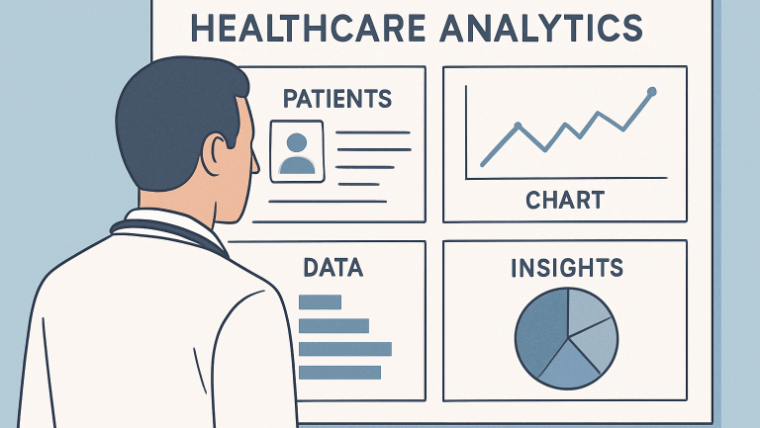Table of Contents
- 1 The Shift Towards Personalized Health Benefits
- 2 Adoption of Individual Coverage Health Reimbursement Arrangements (ICHRAs)
- 3
- 4 Technological Innovations Enhancing Benefit Personalization
- 5 Challenges in Implementing Personalized Health Coverage
- 6 The Role of Open Enrollment in Personalized Benefits
- 7 Future Outlook: The Evolution of Employee Health Benefits
- 8 Conclusion
The Shift Towards Personalized Health Benefits
Employers are increasingly recognizing that a one-size-fits-all approach to health coverage no longer meets the diverse needs of today’s workforce. Employees now expect benefits that reflect their health concerns, lifestyle choices, and financial situations. Personalized health coverage options, such as wellness programs, flexible spending accounts, and tailored insurance plans, reshape how organizations support their teams. This shift improves overall satisfaction and contributes to higher engagement and retention rates.
As more companies adapt to these evolving expectations, flexibility in health benefits has become a competitive necessity. Offering choices catering to different life stages, from early-career professionals to those nearing retirement, helps employees feel supported at every step. Solutions like ADP’s plans demonstrate how businesses are aligning coverage with workforce needs while maintaining compliance and cost efficiency. By embracing personalization, employers foster a healthier, more motivated workforce.
Adoption of Individual Coverage Health Reimbursement Arrangements (ICHRAs)
Individual Coverage Health Reimbursement Arrangements (ICHRAs) are among the most significant innovations in benefits solutions. ICHRAs provide employers with a streamlined, tax-advantaged mechanism to help employees pay for individual health insurance premiums and qualified healthcare expenses, offering much flexibility compared to traditional group health plans. In fact, the adoption of ICHRAs has risen by 30% year-over-year, a testament to their increasing popularity as companies seek more predictable healthcare costs and better plan choices for employees.
ICHRAs prove especially appealing to small and midsize businesses that may struggle to provide comprehensive group health plans, as well as to organizations with high turnover rates or a largely remote and contract-based workforce. These arrangements allow businesses to offer competitive, attractive health benefits without sacrificing budget predictability or administrative efficiency. Employees also benefit, as they can shop for individual policies tailored to their unique circumstances and potentially keep their coverage even during job transitions, reducing the stress associated with employment changes.
Technological Innovations Enhancing Benefit Personalization
The accelerating shift toward tailored benefits is largely powered by digital transformation. Modern employee benefits platforms harness the power of big data, predictive analytics, and machine learning to match workers with the most suitable health plans, making personalization more efficient and scalable. These tools have fundamentally changed how employees enroll in benefits by streamlining processes, reducing administrative headaches, and making comparing options based on projected needs and costs easier.
Artificial Intelligence (AI) now plays a critical role in recommending plans and helping employees make informed decisions in real time. AI-driven chatbots can answer questions instantly, recommend add-on benefits like wellness programs or telehealth services, and adjust offerings based on user feedback or lifestyle preferences. As these technologies mature, we can expect employee benefits to become even more data-driven and responsive, with platforms continually evolving to meet the changing needs of their users.
Challenges in Implementing Personalized Health Coverage
Despite the compelling advantages, the move toward greater personalization introduces added complexities for employers. Organizations need to balance the administrative demands of managing a wider variety of plans with monitoring costs and complying with frequently changing healthcare regulations. For small businesses, these challenges can be heightened by limited resources or expertise, sometimes slowing adoption of innovative coverage models. Additionally, ensuring data security when managing sensitive health information has become a critical responsibility, requiring careful investment in secure systems and protocols.
Another significant hurdle is educating employees who are new to evaluating a wide range of benefit options. Without sufficient guidance and decision support, workers can feel overwhelmed or may not make the best choices for their personal circumstances. As a result, many leading organizations are investing in creating explicit, easy-to-understand materials and providing access to benefits advisors or customer support to help employees confidently navigate this new landscape. Ongoing communication and training are proving essential to maximize the effectiveness of personalized coverage initiatives.
The Role of Open Enrollment in Personalized Benefits
Open enrollment, once viewed as a routine administrative event, is now seen as a strategic moment for organizations to showcase innovations in employee benefits. Leveraging technology, businesses can offer personalized recommendations and interactive plan comparison tools that make the entire selection process much less daunting for employees. By curating plan options and providing transparent cost and coverage information, organizations enable employees to make more informed, individualized choices, leading to greater satisfaction and reduced out-of-pocket expenses.
Enhanced communication tools, decision aids, and digital platforms ensure that employees fully understand their options, making the open enrollment process more efficient and reducing the administrative burden for HR teams. This strategic approach to open enrollment helps employees maximize their benefits and supports long-term organizational goals by boosting engagement and retention.
Future Outlook: The Evolution of Employee Health Benefits
Personalized health coverage is poised to disrupt the employee benefits sector further. As companies continue investing in flexible arrangement models and advanced technology, employees will enjoy even greater autonomy, more meaningful choices, and better support for their needs. Organizations that keep pace with these changes-through ongoing staff education, investments in digital infrastructure, and a strong focus on fostering a culture of well-being-will be well-positioned to attract, engage, and retain top talent in a competitive marketplace. This evolution also benefits seniors after retirement, who can access tailored health support and safety services, and learn how to find discounts for seniors in Canada or elsewhere to help reduce healthcare and wellness costs.
Ultimately, companies that embrace change and champion the shift toward individualized benefits will be those best prepared for the ever-evolving demands of the modern workforce.
Conclusion
The transformation toward personalized health coverage fundamentally redefines what it means to support employees in the modern workforce. Through innovative vehicles like ICHRAs and technological advancements, employers can now design health benefits that are as dynamic and diverse as their people. As these trends continue to gain momentum, organizations prioritizing flexibility and personalization will build healthier, more engaged, and more resilient teams—ultimately setting the stage for enduring success in the years to come.



